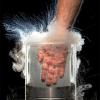AMD R9 390X Coming With Cooler Master Liquid Cooler + Estimated Performance
-
Featured Topics
-
Topics
-
0
-
1
-
pilgr1mag3 ·
Posted in CPUs, Motherboards, and Memory4 -
1
-
0
-
7
-
Guillaume J ·
Posted in Home Theater Equipment0 -
1
-
ImmanuelG ·
Posted in Laptops and Pre-Built Systems5 -
2
-




















Create an account or sign in to comment
You need to be a member in order to leave a comment
Create an account
Sign up for a new account in our community. It's easy!
Register a new accountSign in
Already have an account? Sign in here.
Sign In Now